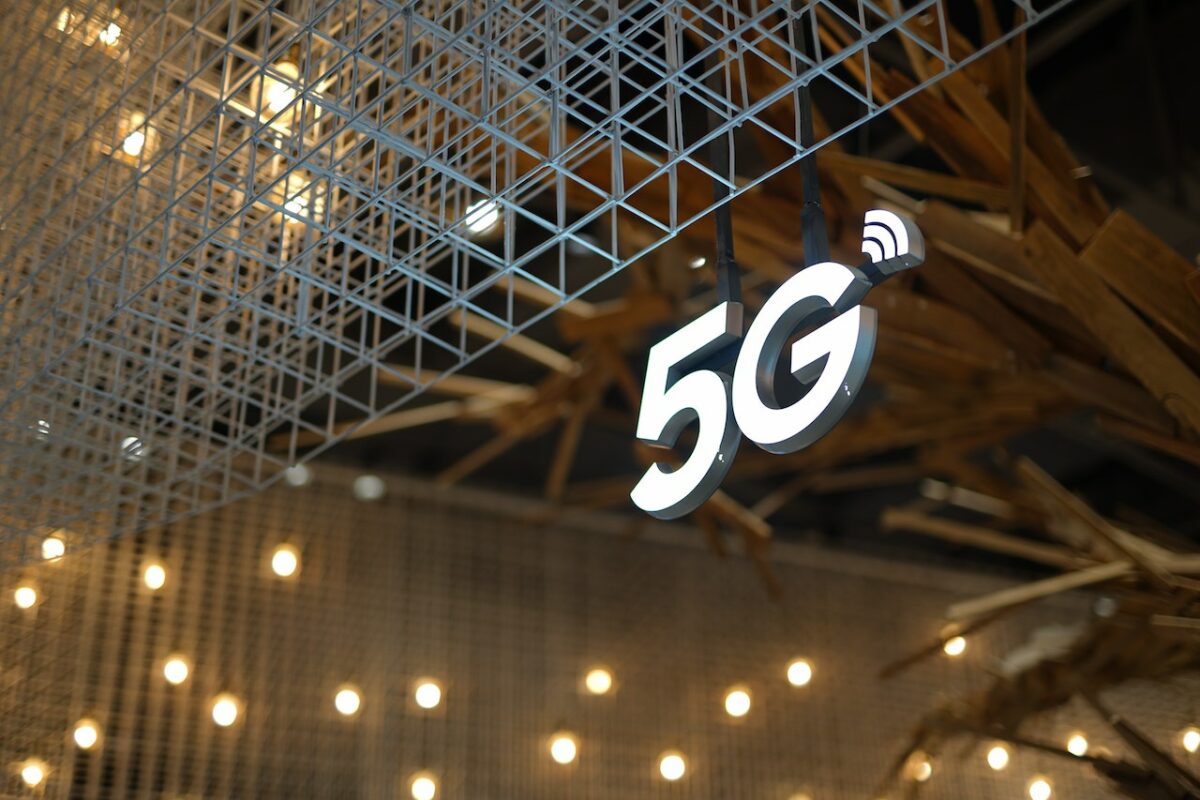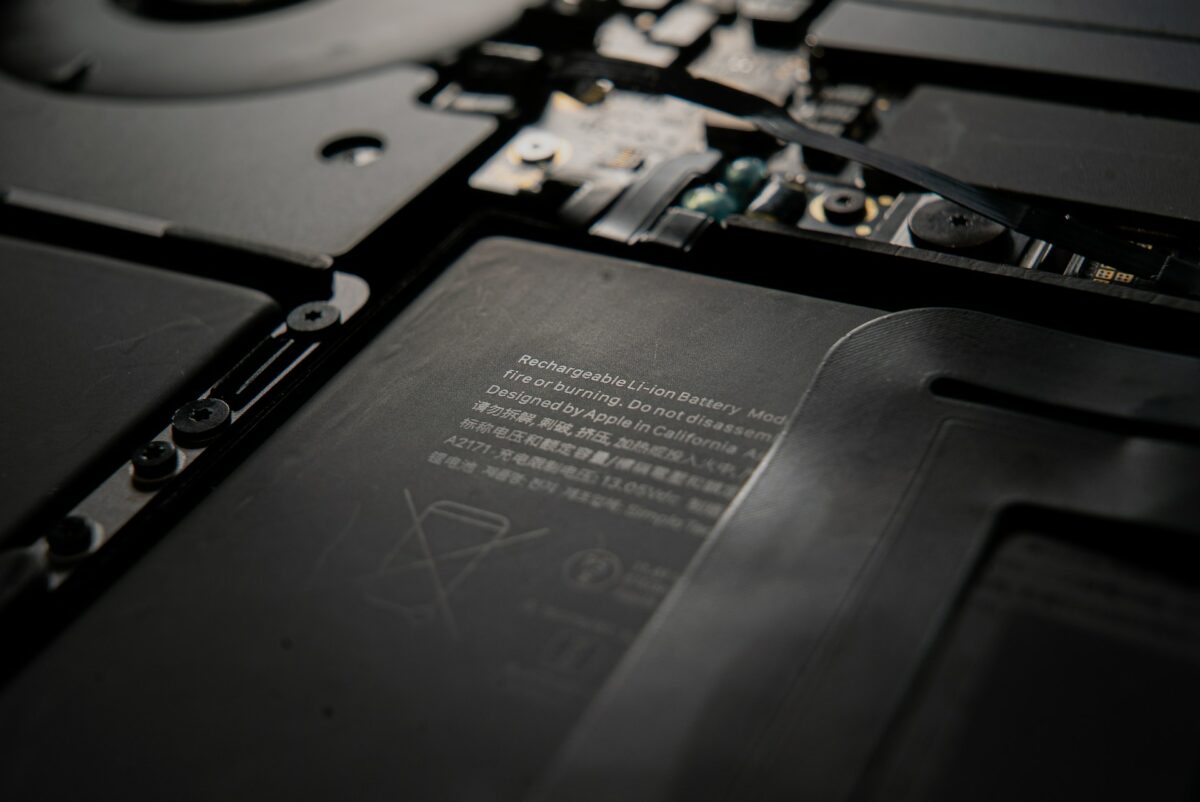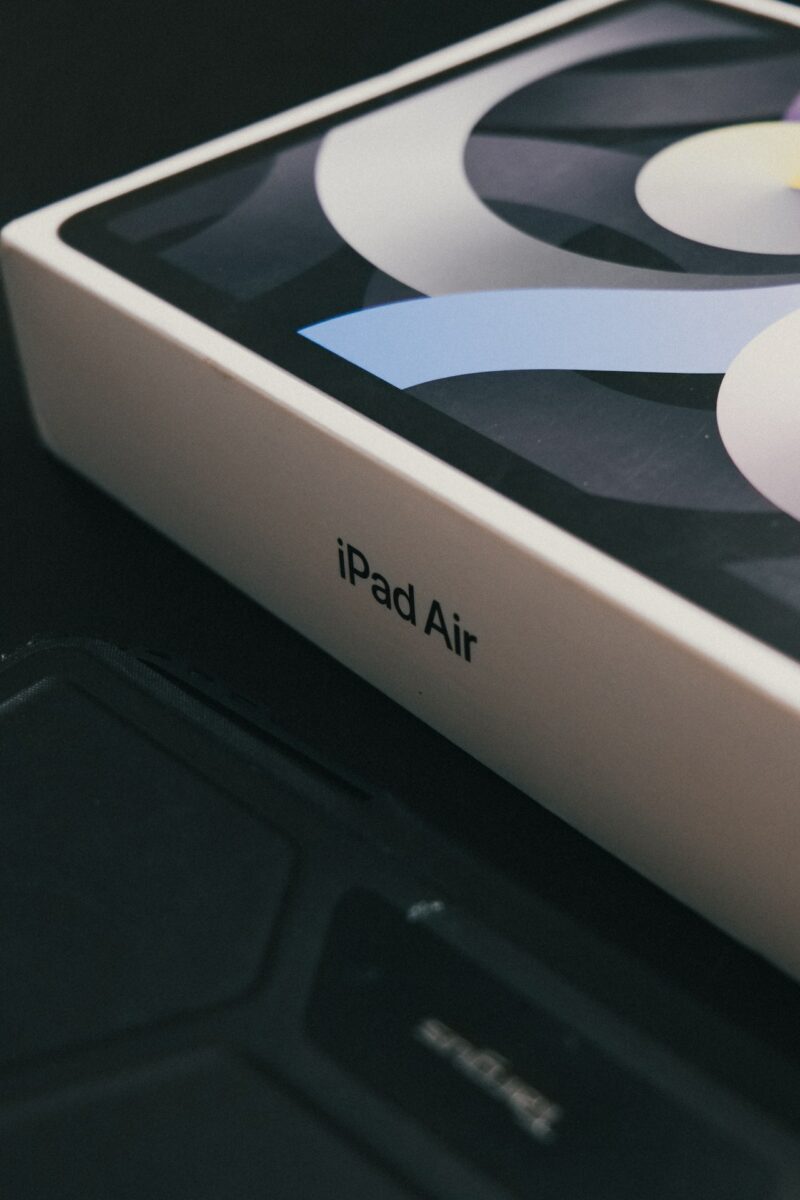If you’re in the market for an iPad Air, you might be torn between ipad air 4th vs 5th generation.
Both models have their pros and cons, and choosing between them can be tough.
In this article, we’ll take a closer look at the differences between the iPad Air 4th and 5th generation, so you can make an informed decision.
One of the most significant differences between the two models is the processor.
The iPad Air 4th generation has an A14 Bionic chip, while the iPad Air 5th generation has an A15 Bionic chip.
While both chips are powerful, the A15 is a newer and more advanced chip, which means it’s faster and more efficient than the A14.
This could be an important factor if you use your iPad for demanding tasks, such as video editing or gaming.
Another difference between the two models is the connectivity options.
The iPad Air 5th generation supports 5G, while the iPad Air 4th generation only supports 4G LTE.
If you live in an area with 5G coverage, this could be a significant advantage, as it means you’ll be able to access faster download and upload speeds.
However, if you don’t have 5G coverage in your area, this may not be a crucial factor for you.
Table of Contents
ToggleDesign
When it comes to the design of the iPad Air 4th and 5th generations, there are some similarities and differences worth noting.
Both models have a slim and lightweight design, making them easy to carry around.
However, there are some differences in terms of color options and overall appearance.

The iPad Air 4th generation comes in five different colors: Silver, Space Gray, Rose Gold, Green, and Sky Blue.
It features a flat edge design similar to the iPad Pro, which makes it easier to hold and gives it a more modern look.
The display size is 10.9 inches, and it has a resolution of 2360 x 1640 pixels.
On the other hand, the iPad Air 5th generation has a similar design to the iPad Air 4th generation, but with some notable changes.
The color options have been reduced to just three: Space Gray, Silver, and Rose Gold.
However, the iPad Air 5th generation has a larger display size of 11 inches, which provides more screen real estate for multitasking and media consumption.
The display resolution is the same as the iPad Air 4th generation at 2360 x 1640 pixels.
Overall, both the iPad Air 4th and 5th generations have a sleek and modern design that is sure to impress.
The flat edge design of the iPad Air 4th generation gives it a more professional look, while the larger display of the iPad Air 5th generation provides a more immersive viewing experience.
Regardless of which model you choose, you can be sure that you’re getting a high-quality device with a design that is both functional and aesthetically pleasing.
Performance
When it comes to performance, the iPad Air (5th generation) is a clear winner over the iPad Air (4th generation).
With the A14 Bionic chip, the iPad Air (5th generation) has a 40% faster CPU and 30% faster graphics performance than the iPad Air (4th generation).
However, the iPad Air (4th generation) still has impressive performance thanks to its A14 Bionic chip.
But if you want the ultimate performance, the iPad Air (5th generation) with the M1 chip is the way to go.
It has a 60% faster CPU performance and twice the graphics performance compared to the iPad Air (4th generation).
This means you can easily run multiple apps at once, edit videos, and even play graphics-intensive games without any lag.
Both iPad Air models have a Liquid Retina display, but the iPad Air (5th generation) has a slightly better display with True Tone and P3 wide color gamut.
This means you get more accurate colors and a better viewing experience overall.
The iPad Air (5th generation) also has a 5G option, which is a significant upgrade over the iPad Air (4th generation) that only supports 4G.
This means you can enjoy faster download and upload speeds, making it easier to stream videos and work remotely.
Overall, if you want the best performance and features, the iPad Air (5th generation) with the M1 chip is the way to go.
But if you’re on a budget, the iPad Air (4th generation) still has impressive performance and features that make it a great option.
Connectivity
When it comes to connectivity, the iPad Air 5th generation has a few notable improvements over the 4th generation.
Let’s take a closer look.
5G Support
One of the most significant upgrades in the iPad Air 5th generation is its support for 5G networks.

While the 4th generation only supports 4G LTE, the 5th generation takes advantage of the latest cellular technology.
With 5G, you can enjoy faster download and upload speeds, lower latency, and improved network reliability.
However, keep in mind that 5G availability and coverage vary depending on your location and carrier.
USB-C
Another connectivity improvement in the iPad Air 5th generation is the switch from Lightning to USB-C.
This means you can use a wider range of accessories and peripherals with your iPad, such as external hard drives, cameras, and displays.
Plus, USB-C supports faster charging and data transfer speeds than Lightning.
Center Stage
The iPad Air 5th generation also introduces a new feature called Center Stage.
This technology uses the front-facing camera to keep you in the frame during video calls, even if you move around.
Center Stage works with popular video conferencing apps like Zoom, FaceTime, and Skype, making it easier to stay connected with friends, family, and colleagues.
Conclusion
Overall, the iPad Air 5th generation offers some compelling improvements when it comes to connectivity.
With support for 5G networks, USB-C, and Center Stage, you can enjoy faster speeds, more accessory options, and better video calls.
Camera
When it comes to the camera, the iPad Air 5th generation has some significant improvements over the 4th generation.
The rear camera has been upgraded to 12MP, up from the 8MP on the 4th generation.
This means that you can take higher quality photos and videos with the new iPad Air.
In addition, the front-facing camera has also been upgraded to 7MP, up from the 7MP on the 4th generation.
This means that you can take better selfies and make higher quality video calls.
One of the most significant improvements to the camera on the iPad Air 5th generation is the addition of True Tone flash.
True Tone flash is a feature that adjusts the color and intensity of the flash to match the ambient light in the room.
This means that your photos will look more natural and less washed out, even in low light situations.
Another new feature on the iPad Air 5th generation is the ability to take portrait mode photos with the front-facing camera.
This means that you can take high-quality selfies with a blurred background, just like you can with the rear camera.
Overall, the camera on the iPad Air 5th generation is a significant improvement over the 4th generation.
With a higher quality rear camera, upgraded front-facing camera, True Tone flash, and portrait mode on the front-facing camera, the iPad Air 5th generation is a great choice for anyone who wants to take high-quality photos and videos on their tablet.
Battery Life
When it comes to battery life, both the iPad Air 4 and 5 offer up to 10 hours of web browsing, video playback, or music listening on a single charge.

However, the actual battery life you get may vary depending on factors such as screen brightness, Wi-Fi usage, and app usage.
If you’re someone who uses your iPad Air for work or school, you may find that the battery life on both models is sufficient for a full day of use.
However, if you’re a power user who frequently streams video or plays games, you may find that you need to recharge your iPad Air more often.
One thing to note is that the iPad Air 5 has a slightly larger battery capacity than the iPad Air 4, which could potentially give it a slight edge in terms of battery life.
Additionally, the iPad Air 5 supports fast charging with a 20W power adapter (sold separately), which can charge the battery up to 50% in just 30 minutes.
Overall, both the iPad Air 4 and 5 offer solid battery life that should be sufficient for most users.
However, if you’re someone who values having the latest and greatest technology, the slight improvements in battery life on the iPad Air 5 may be worth considering.
Accessories
When it comes to accessories for your iPad Air, there are plenty of options available.
Here are some of the best accessories to consider:
Apple Pencil
If you plan on using your iPad Air for drawing or note-taking, the Apple Pencil is a must-have accessory.
The Apple Pencil 2 is compatible with the iPad Air 4th and 5th generations and offers a precise and responsive drawing experience.
Plus, it charges wirelessly when attached to the side of your iPad Air.
Keyboard Case
If you plan on using your iPad Air for work or school, a keyboard case is a great accessory to have.
There are plenty of options available, from Apple’s own Smart Keyboard Folio to third-party options like the Logitech Combo Touch.
A keyboard case can turn your iPad Air into a productivity powerhouse, allowing you to type quickly and efficiently.
Backup Chargers
While the iPad Air 4th and 5th generations come with a 20W charger, having an extra charger is always a good idea.
Anker makes a super compact 20W USB-C charger that even has a foldable plug, making it especially great for traveling.
Plus, this is a two-pack, meaning you get two great chargers for the price of one.
Screen Protector
Protecting your iPad Air’s screen is important, especially if you plan on using it on the go.
A screen protector can help prevent scratches and cracks.
There are plenty of options available, from tempered glass to film protectors.
Just make sure you choose one that is compatible with the iPad Air 4th or 5th generation.
Case
A case is a great way to protect your iPad Air from bumps and scratches.

There are plenty of options available, from slim and lightweight cases to rugged and protective ones.
Some popular options include Apple’s own Smart Folio and the OtterBox Defender Series.
Overall, there are plenty of great accessories available for your iPad Air 4th or 5th generation.
Whether you’re looking to draw, type, or just protect your device, there’s an accessory out there for you.
Specifications
When it comes to the iPad Air 4th and 5th generation, there are some key differences in their specifications.
Here are the main specs you should be aware of:
Design
The iPad Air 4th generation and 5th generation have similar designs, with both featuring a 10.9-inch Liquid Retina display with IPS technology.
However, the newer 5th generation model is slightly thinner and lighter than the 4th generation model, making it easier to carry around with you.
Processor
One of the biggest differences between the iPad Air 4th and 5th generation is the processor.
The 5th generation model features Apple’s A14 Bionic chip, which is more powerful than the A12 Bionic chip found in the 4th generation model.
This means that the 5th generation iPad Air is faster and more efficient than its predecessor.
Charging And Connectivity
Both the iPad Air 4th and 5th generation feature a USB-C port for charging and data transfer, which is a significant improvement over the older Lightning connector found on previous models.
Additionally, the 5th generation model features 5G connectivity, which allows for faster internet speeds when using a compatible network.
Face ID And Touch ID
Another significant difference between the iPad Air 4th and 5th generation is the method of biometric authentication.
The 4th generation model features Touch ID, which is located on the power button.
The 5th generation model, on the other hand, features Face ID, which uses facial recognition technology to unlock the device.
Smart Connector
The iPad Air 5th generation also features a Smart Connector, which allows for easy connection to Apple’s Magic Keyboard and other compatible accessories.
This is a significant improvement over the 4th generation model, which required the use of Bluetooth to connect to external keyboards.
Overall, the iPad Air 5th generation is a significant improvement over the 4th generation model in terms of processing power, connectivity, and biometric authentication.
However, if you don’t need the latest and greatest features, the 4th generation model is still a solid choice for most users.
Price
When it comes to purchasing an iPad Air, price is a significant factor to consider.
The 5th generation iPad Air is slightly more expensive than the 4th generation model.
Here’s a breakdown of the pricing for each model:

- iPad Air 4: The base model of the iPad Air 4 starts at $599. This price gets you 64GB of storage, and if you want to upgrade to 256GB, you’ll need to pay an additional $150.
- iPad Air 5: The base model of the iPad Air 5 starts at $599 as well, but it comes with the M1 chip, which makes it more powerful than its predecessor. The storage options are the same as the iPad Air 4, with 64GB and 256GB available.
It’s worth noting that these prices are for the Wi-Fi only models.
If you want cellular connectivity, you’ll need to pay an additional $130 for either model.
While the iPad Air 5 is more expensive than the iPad Air 4, its improved performance and features may be worth the extra cost for some users.
However, if you’re on a tight budget, the iPad Air 4 is still an excellent device that offers plenty of value for its price.
Ultimately, the decision of which iPad Air model to purchase will come down to your personal needs and budget.
Consider what features are most important to you and how much you’re willing to spend before making a decision.
iPad Air 4th Vs 5th generation: Which Should You Choose?
If you’re looking to buy a new iPad Air, you might be wondering which generation to choose.
Both the 4th and 5th generations have their pros and cons, so it ultimately comes down to your personal preferences and needs.
Design
In terms of design, the iPad Air 5th generation looks almost identical to its predecessor.
Both models have a 10.9-inch Liquid Retina display, slim bezels, and a Touch ID sensor integrated into the power button.
However, the 5th generation comes in new colors, including green and purple, and has a slightly thinner profile.
Performance
The iPad Air 5th generation boasts a significant performance boost thanks to the M1 chip, which is also used in the latest MacBook Air and MacBook Pro models.
According to Apple, the 5th generation is 60% faster than the 4th generation and has twice the graphics performance.
This means that you’ll be able to run more demanding apps and multitask with ease.
Features
One of the most significant differences between the two models is the charging port.
The iPad Air 4th generation uses a Lightning port, while the 5th generation uses a USB-C port. The USB-C port allows for faster charging and more versatility when it comes to connecting to other devices.
Another feature that sets the 5th generation apart is its support for the 2nd generation Apple Pencil.
This means you can use the Apple Pencil with pixel-perfect precision, tilt and pressure sensitivity, and imperceptible lag.
Price
Of course, price is always a consideration when choosing between two models.
The iPad Air 4th generation is currently priced starting at $599, while the iPad Air 5th generation starts at $799.
Keep in mind that the price may vary depending on the storage capacity and cellular connectivity options you choose.
Overall, both the iPad Air 4th and 5th generations are excellent tablets that offer a great user experience.
If you’re on a tight budget, the 4th generation is still a solid choice.
However, if you’re looking for the latest and greatest features and performance, the 5th generation is the way to go.
Key Takeaways
If you’re in the market for a new iPad, you may be considering the iPad Air 4th or 5th generation.
Here are some key takeaways to help you make an informed decision.

Design And Display
Both the iPad Air 4th and 5th generation have a 10.9-inch display with a resolution of 2360-by-1640 pixels at 264 pixels per inch (ppi).
However, the iPad Air 5th generation has a fully laminated display, which means the screen is closer to the glass and reduces glare and reflections.
Performance And Chip
The iPad Air 5th generation has a more powerful A14 Bionic chip compared to the A12 Bionic chip in the iPad Air 4th generation.
This means the iPad Air 5th generation is faster and more efficient, making it better suited for demanding tasks such as video editing or gaming.
Connectivity
The iPad Air 5th generation has 5G connectivity, allowing for faster download and upload speeds.
However, it is important to note that 5G coverage may not be available in all areas.
Both iPad Air 4th and 5th generation models have Wi-Fi and Bluetooth connectivity.
Accessories
Both iPad Air 4th and 5th generation models are compatible with the 2nd generation Apple Pencil and Magic Keyboard.
Additionally, the iPad Air 5th generation has support for the new AirTag accessory, which can help you keep track of your iPad if it gets lost.
Price
The iPad Air 5th generation is slightly more expensive than the iPad Air 4th generation, but the price difference may be worth it for the improved performance and fully laminated display.
Overall, the iPad Air 5th generation offers some significant upgrades compared to the iPad Air 4th generation.
However, if you’re on a budget or don’t need the latest and greatest features, the iPad Air 4th generation is still a solid choice.











